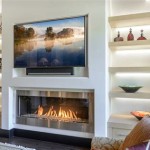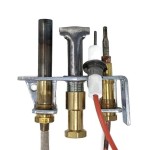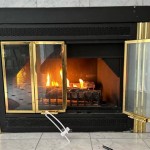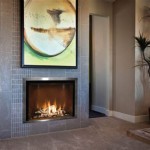Stone Wood Burning Fireplace Ideas: A Comprehensive Guide
The incorporation of a stone wood-burning fireplace into a home design represents a commitment to both aesthetics and functionality. These fireplaces are not merely heating sources; they are architectural focal points that can significantly enhance the character and value of a living space. The selection of stone, the design of the hearth, and the integration of the fireplace into the surrounding environment are all crucial considerations when planning such a project. This article explores various stone wood-burning fireplace ideas, offering insights into design principles, stone types, and installation considerations.
The enduring appeal of the stone wood-burning fireplace stems from its connection to natural elements and its ability to create a warm and inviting atmosphere. Unlike modern heating systems, a fireplace provides a visible flame and the comforting sounds of crackling wood, fostering a sense of tranquility and connection to the past. The selection of stone contributes significantly to this ambience, with different types of stone evoking distinct styles and moods.
Choosing the Right Stone for Your Fireplace
The choice of stone is paramount when designing a stone wood-burning fireplace. The aesthetic properties of the stone, its thermal resistance, and its durability are all essential factors to consider. Different stone types offer varying textures, colors, and patterns, allowing for a wide range of design possibilities. Some of the most popular stone options for fireplaces include:
Fieldstone: Fieldstone, often sourced directly from the landscape, offers a rustic and natural appearance. Its irregular shapes and varied colors create a visually dynamic surface that complements traditional and country-style homes. However, fieldstone can be more challenging to work with due to its inconsistent shapes and sizes, requiring skilled masonry work to ensure a stable and aesthetically pleasing structure.
River Rock: River rock, characterized by its smooth, rounded shapes and neutral colors, provides a more refined and contemporary aesthetic than fieldstone. It is often used to create a smooth, textured surface that is both visually appealing and tactile. River rock is generally easier to install than fieldstone, but it requires careful arrangement to achieve a balanced and harmonious design.
Ledgestone: Ledgestone, composed of thin, stacked layers of stone, offers a clean and modern aesthetic. Its linear pattern and subtle variations in color create a sophisticated look that is well-suited to contemporary and transitional homes. Ledgestone is available in various materials, including slate, quartzite, and limestone, each offering unique characteristics and visual appeal.
Limestone: Limestone is a sedimentary rock known for its durability and versatility. It is available in a range of colors, from creamy white to dark gray, and can be easily shaped and carved. Limestone offers a classic and elegant aesthetic that complements a wide range of architectural styles. It is also relatively heat-resistant, making it a suitable choice for fireplace surrounds.
Slate: Slate is a metamorphic rock characterized by its fine-grained texture and natural clefting. It is available in a variety of colors, including black, gray, green, and purple, and offers a sophisticated and contemporary aesthetic. Slate is highly durable and heat-resistant, making it an excellent choice for fireplace surrounds and hearths.
Granite: Granite is an igneous rock known for its exceptional durability and heat resistance. It is available in a wide range of colors and patterns, and can be polished to a high gloss finish. Granite offers a luxurious and contemporary aesthetic that is well-suited to modern homes. However, it can be more expensive than other stone options.
When selecting stone, it is crucial to consider the overall design of the room and the desired aesthetic. The color, texture, and pattern of the stone should complement the existing décor and create a cohesive and visually appealing space. It is also important to consider the size and scale of the fireplace in relation to the room. A large fireplace with a bold stone pattern may overwhelm a small room, while a small fireplace with a subtle stone pattern may get lost in a large room.
Designing the Fireplace Hearth and Surround
The hearth and surround are integral components of a stone wood-burning fireplace, contributing to both its aesthetic appeal and its functionality. The hearth provides a fire-resistant surface in front of the fireplace, protecting the flooring from sparks and embers. The surround frames the firebox and connects the fireplace to the surrounding wall, creating a cohesive and visually appealing design.
The design of the hearth should be carefully considered, taking into account the size and style of the fireplace. A traditional fireplace may feature a raised hearth made of brick or stone, while a contemporary fireplace may have a flush hearth made of concrete or tile. The hearth should be large enough to accommodate the firebox and provide adequate protection for the flooring.
The surround can be designed to complement the stone used for the fireplace, or it can be created using contrasting materials to add visual interest. Common surround materials include wood, metal, and tile. The surround can be simple and understated, or it can be elaborate and ornate, depending on the desired aesthetic. Consider these designs:
Full Stone Surround: This design incorporates stone from the floor to the ceiling, providing a dramatic and impactful visual statement. It is well-suited to large rooms with high ceilings and can create a sense of grandeur and opulence.
Partial Stone Surround: This design uses stone to frame the firebox and extend a portion of the way up the wall. It is a more subtle and versatile option that can be adapted to a variety of architectural styles.
Stone Accent Wall: This design uses a stone wall as a backdrop for the fireplace, creating a focal point in the room. The fireplace can be built into the stone wall or placed in front of it, depending on the desired effect.
Mantel Integration: The integration of a mantel into the fireplace design can add a touch of elegance and functionality. The mantel can be made of wood, stone, or metal, and can be used to display decorative items or provide a convenient surface for placing drinks or books.
When designing the hearth and surround, it is important to consider the safety aspects. The materials used should be fire-resistant and non-combustible, and the design should comply with all local building codes. It is also important to ensure that the fireplace is properly ventilated to prevent the buildup of harmful gases.
Installation and Safety Considerations
The installation of a stone wood-burning fireplace requires specialized skills and knowledge. It is essential to hire a qualified and experienced mason to ensure that the fireplace is installed correctly and safely. The installation process involves several key steps, including:
Foundation Preparation: The foundation must be strong enough to support the weight of the fireplace. This may involve pouring a concrete slab or reinforcing an existing foundation.
Firebox Construction: The firebox is the heart of the fireplace, and it must be constructed using fire-resistant materials such as firebrick. The firebox should be designed to provide adequate airflow and to contain the fire safely.
Chimney Construction: The chimney is responsible for venting the smoke and gases produced by the fire. It must be constructed according to local building codes and should be properly insulated to prevent heat loss.
Stone Installation: The stone should be carefully selected and arranged to create a visually appealing and structurally sound surface. The stone should be mortared together using a fire-resistant mortar.
Finishing Touches: Once the stone is installed, the fireplace should be cleaned and sealed to protect it from the elements. The hearth and surround should be finished to complement the fireplace design.
Safety is paramount when installing and using a wood-burning fireplace. The fireplace should be inspected regularly to ensure that it is in good working order. The chimney should be cleaned annually to remove creosote buildup, which can cause chimney fires. It is also important to use seasoned firewood, as green wood produces more smoke and creosote.
A carbon monoxide detector should be installed in the home to alert occupants to the presence of this dangerous gas. Never leave a fire unattended, and always ensure that the fire is completely extinguished before leaving the house or going to bed.
In conclusion, the construction of a stone wood-burning fireplace is a significant undertaking that requires careful planning, skilled craftsmanship, and a commitment to safety. This central feature of a home can provide a space of aesthetic appeal and can represent a long-term investment.

Stone Veneer Fireplace Ideas That Will Warm Up Your Home Ply Gem

Stone Fireplaces

65 Best Stone Fireplace Design Ideas To Ignite Your Decor Designs Home Farmhouse

Natural Stacked Stone Veneer Fireplace Ideas

Moving Company Quotes Tips To Plan Your Move Mymove Fireplace Design Stone Designs Stacked Fireplaces

50 Sensational Stone Fireplaces To Warm Your Senses

30 Outdoor Fireplace Ideas Cozy Fireplaces

100 Fireplace Design Ideas For A Warm Home During Winter

50 Sensational Stone Fireplaces To Warm Your Senses Home Fireplace Rustic Farmhouse Timber Frame Interior

Best Stone Fireplace Ideas
Related Posts








